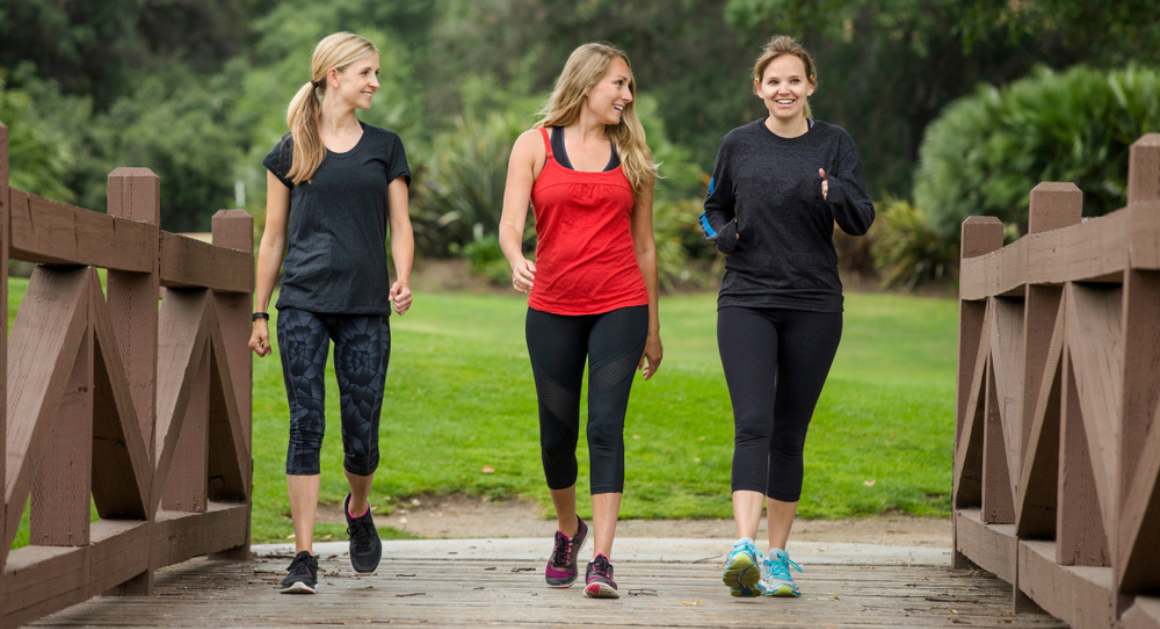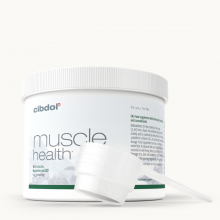10000 Steps a day : Benefits, Tips, and Activities
Published:
Ever pondered the meaning of strolling 10,000 steps every day? This seemingly arbitrary number has become a popular benchmark for daily physical activity. In this comprehensive guide, we will delve into the history and benefits of achieving 10,000 steps each day.
Contents:
- What is 10000 Steps?
- History of 10000 Steps
- Benefits of 10000 Steps
- How to Track 10000 Steps
- How Far is 10000 Steps?
- Are 10000 Steps Necessary?
- Comparing Different Exercise Routines with 10000 Steps
- What Gear Do You Need for Taking 10000 Steps?
- How Can You Make Taking 10000 Steps Fun?
- What are Some Tips for Successfully Reaching the Goal of Taking 10000 Steps?
- FAQs in Relation to 10000 Steps
- Conclusion
We'll explore how far 10,000 steps actually is in terms of distance and calories burned. Furthermore, we will discuss whether reaching this goal is truly necessary for maintaining optimal health or if there are alternative ways to achieve your fitness goals without strictly adhering to this target.
Additionally, our comparison between various exercise routines with walking 10,000 steps will provide valuable insights on which activities may be best suited for your individual needs. We also cover essential gear needed for successfully taking part in this challenge and share tips on making it an enjoyable experience by incorporating music or social elements.
Finally, we offer practical advice on setting realistic goals and staying motivated throughout your journey towards consistently accomplishing those coveted 10,000 steps per day.

What is 10000 Steps?
A popular goal for many striving to better their health and wellbeing, 10,000 steps a day has become an oft-cited benchmark. But what exactly does this number represent, and why has it gained such widespread recognition? In this section, we will explore the history of the 10,000 steps movement, its benefits, and how you can track your progress towards achieving this daily target.
History of 10000 Steps
The origin of the 10,000 steps goal can be traced back to Japan in the early 1960s when Dr. Yoshiro Hatano developed a pedometer called Manpo-kei, which translates to "10,000-step meter." The idea behind this device was based on research suggesting that walking at least 10,000 steps per day could help maintain good health. Since then, numerous studies have supported these findings by demonstrating various physical and mental health benefits associated with regular walking.
Benefits of 10000 Steps
- Better cardiovascular health: Walking regularly helps lower blood pressure levels and reduces your risk for heart disease.
- Maintaining healthy body weight: Taking around 7k-9k calories burned from walking each week, depending on factors like age or gender, may aid in maintaining or losing weight.
- Mental wellness: Engaging in physical activity like walking can boost mood-enhancing endorphins and help alleviate stress.
- Improved muscle strength: Walking regularly helps strengthen the muscles in your legs, hips, and core.
How to Track 10000 Steps
To track your progress towards 10,000 steps a day, you can use tools such as pedometers or fitness trackers like Fitbit , Garmin , and Apple Watch . These devices come in different forms like wristbands or clip-on gadgets that count your steps throughout the day. Some popular options include Fitbit, Garmin, and Apple Watch. Additionally, many smartphones have built-in step counters within their health apps which provide an easy way for users to track their daily activity without needing additional equipment.
10000 Steps is a great way to stay active and healthy, while also providing many other benefits. Considering the advantages of taking 10000 steps, let's examine how much ground that entails and the typical time it requires to traverse such a distance.
How Far is 10000 Steps?
Understanding the distance covered and the time it takes to walk 10,000 steps can help you plan your daily routine better and set realistic fitness goals. In this section, we will discuss how far 10,000 steps are in miles and kilometers, the average time it takes to walk this distance, and the number of calories burned during such a workout.
Distance in Miles and Kilometers
The actual distance covered while walking 10,000 steps depends on various factors like stride length and walking speed. On average, one step covers about 2.5 feet (0.76 meters). Therefore:
- Miles: Walking 10,000 steps would cover approximately 5 miles (8 kilometers).
- Kilometers: Walking 10,000 steps would cover around 8 kilometers (5 miles).
Average Time to Walk 10000 Steps
The time taken to complete a certain number of steps varies depending on individual walking speeds. However, an average person walks at a pace of about 3 miles per hour. Based on these estimates:
- An individual may take approximately 1 hour and 40 minutes to complete their goal of taking 10,000 steps.
Calories Burned from Walking 10000 Steps
Various elements, like body weight, gait velocity and landscape, can influence the amount of calories burned while walking. On average, an individual can burn around 300 to 400 calories by walking 10,000 steps at a moderate pace. This makes it an effective way to maintain or lose weight while improving overall health.
Walking 10,000 steps a day can be an achievable goal with the right mindset and dedication. Let's examine the health impacts of aiming for 10,000 steps daily and investigate alternate approaches to reach that goal without having to take so many strides.

Are 10000 Steps Necessary?
But is this goal necessary for everyone? Let's explore the health benefits associated with reaching this daily step count and discuss alternative ways to achieve your fitness goals without necessarily walking 10,000 steps every day.
Health Benefits of Reaching the Goal of 10000 Steps a Day
Reaching the goal of 10,000 steps per day can have multiple health benefits including improved cardiovascular health, increased metabolism, better mental well-being and reduced risk of chronic diseases. Additionally, achieving this daily step count can help maintain healthy body weight and promote better sleep quality.
- Cardiovascular Health: Walking regularly improves blood circulation and strengthens the heart muscles.
- Mental Well-Being: Physical activity releases endorphins that elevate mood and reduce stress levels.
- Disease Prevention: Regular exercise lowers the risk factors associated with various chronic conditions such as type-2 diabetes or high blood pressure.
Other Ways to Reach Your Fitness Goals Without Taking 10000 Steps a Day
If you find it challenging to reach the goal of taking 10,000 steps every day due to time constraints or physical limitations, there are other effective methods available for maintaining an active lifestyle. Some alternatives include:
- Aerobic Exercises: Engaging in activities like swimming, cycling, or dancing can help improve cardiovascular health and burn calories.
- Strength Training: Incorporating resistance exercises into your routine can increase muscle mass and boost metabolism.
- Yoga or Pilates: Practicing these low-impact workouts can enhance flexibility, balance, and overall well-being.
Tips for Achieving the Goal of 10000 Steps a Day
If you're committed to reaching the goal of taking 10,000 steps daily but need some guidance on how to make it more achievable, consider implementing these strategies:
- Park Farther Away: Choose parking spots farther from your destination to add extra walking distance throughout the day.
- Take Walking Breaks at Work: Use short breaks during work hours to walk around the office or outside for fresh air.
- Incorporate Stairs Into Your Routine: Climbing stairs is an excellent way to increase step count while also strengthening leg muscles. Opt for stairs instead of elevators whenever possible.
Achieving health objectives may not necessarily necessitate 10,000 strides daily; however, it can be an advantageous approach to remain vigorous and active. By comparing different exercise routines with 10,000 steps such as walking vs running or cycling vs walking we can gain further insight into the benefits of taking this many steps each day.
Comparing Different Exercise Routines with 10000 Steps
In this section, we will compare various exercise routines to walking 10,000 steps a day and discuss their respective benefits and drawbacks. By examining the distinctions between these routines, you can make a knowledgeable decision as to which activity is best for achieving your physical fitness objectives.
Walking vs Running 10000 Steps
While both walking and running are excellent forms of cardiovascular exercise that can help improve overall health and well-being, there are some key differences between the two activities. Walking is generally considered a low-impact exercise, which makes it suitable for those with joint issues or who are seeking a less strenuous workout; in contrast, running provides more intense cardiovascular benefits in shorter timeframes. This makes it suitable for people who may have joint issues or those looking for a gentler workout.
Running, on the other hand, provides more intense cardiovascular benefits in a shorter amount of time due to its higher intensity level. However, it also places greater strain on the body's joints and muscles than walking does.
- Calories burned: Running burns more calories per mile than walking; however, if you walk enough miles (such as reaching 10k steps), you can still achieve significant calorie burn.
- Risk of injury: Due to its high impact nature, running carries an increased risk of injury compared to walking.
- Fitness levels required: Walking is accessible for most individuals regardless of fitness level while running typically requires higher baseline fitness levels before starting.

Cycling vs Walking 10 thousand Steps
Cycling offers another alternative form of cardio exercise that has different advantages over walking. As a low-impact activity, cycling is easier on the joints than running and can be an excellent option for those who have joint issues or prefer less impact during their workouts.
However, it's important to note that cycling primarily targets the lower body muscles, while walking provides more of a full-body workout. Furthermore, cycling may not offer the same stress-relieving advantages as a slow stroll since it is generally done at faster speeds.
- Calories burned: Cycling burns more calories per hour compared to walking but requires additional equipment (such as a bike).
- Risk of injury: Cycling carries some risk of injury due to potential falls or accidents; however, its low impact nature makes it gentler on joints compared to running.
- Fitness levels required: Similar to walking, cycling can be adapted for various fitness levels by adjusting speed and resistance settings on your bike.
Working Out vs Walking 10 thousand Steps
"Working out" encompasses many different types of exercise routines such as strength training or high-intensity interval training (HIIT). These forms of exercise offer unique benefits that complement those gained from reaching 10k steps daily. For example:
- Strength training, which focuses on building muscle mass through weightlifting or bodyweight exercises like push-ups and squats;
- HIIT, which involves short bursts of intense exercise followed by periods of rest, can help improve cardiovascular fitness and burn calories more efficiently than steady-state cardio activities like walking.
Incorporating a variety of exercises into your routine is key for achieving optimal health benefits, even if they don't contribute to daily step count. Therefore, it's essential to consider incorporating a variety of exercises into your routine for optimal results.
Taking 10,000 strides can be an ideal approach to get fit and stay sound. Equipping yourself with the necessary tools will ensure that you are able to accurately measure your progress as you reach each step of your fitness journey.
What Gear Do You Need for Taking 10000 Steps?
Taking 10,000 steps a day is an excellent way to stay active and improve your overall health. For comfort and safety while walking, it is essential to have the right gear. In this section, we will discuss the necessary shoes, clothing, and accessories for achieving your daily step goal.
Shoes for Taking 10000 Steps
The most critical piece of equipment you need when walking is a comfortable pair of shoes that provide proper support. Look for walking-specific shoes with cushioning in the heel and forefoot areas as well as good arch support. It's also essential to choose a shoe that fits correctly - not too tight or too loose - to prevent blisters or discomfort while walking.
Clothing for Taking 10000 Steps
Selecting appropriate clothing can make all the difference in ensuring a comfortable walk experience. Opt for moisture-wicking fabrics like polyester or nylon that help keep sweat away from your skin and dry quickly after getting wet. Avoid cotton clothes since they tend to retain moisture which may cause chafing over time.
- Tops: Choose lightweight shirts with long sleeves if you're walking under direct sunlight or short sleeves if temperatures are cooler.
- Pants/Shorts: Go for pants made from breathable materials with some stretchiness so they don't restrict movement while taking strides on different terrains.
- Socks: Invest in quality socks designed specifically for walking activities; these usually have extra padding at pressure points like the heel and ball of the foot.

Accessories for Tracking Your Progress with 10000 Steps
To keep track of your daily step count and monitor your progress, consider using a fitness tracker or pedometer. These gadgets can be affixed to your clothing or worn on the wrist. Some advanced models even offer additional features like heart rate monitoring, sleep tracking, and GPS capabilities. Alternatively, you can use smartphone apps that utilize built-in sensors to measure steps taken throughout the day.
In addition to these tracking tools, other useful accessories include:
- Water bottle: Stay hydrated during long walks by carrying a reusable water bottle with you.
- Sun protection: Wear sunglasses with UV protection lenses and apply sunscreen before heading out in sunny weather conditions.
- Hats/Visors: Protect yourself from direct sunlight by wearing hats or visors while walking outdoors.
Having the right gear for taking 10,000 steps is essential to ensure you stay safe and comfortable while reaching your goals. Now let's explore ways to make this task more enjoyable by introducing exciting elements.
How Can You Make Taking 10000 Steps Fun?
Reaching the daily step goal of 10,000 steps can be made easier by adding some fun elements to your routine. By incorporating some fun elements into your routine and making it more enjoyable, you'll find that reaching your daily step goal becomes much easier. Here are some ideas on how to make taking 10,000 steps an engaging and entertaining activity.
Incorporating Music into Your Routine
Listening to music while walking can not only help pass the time but also motivate you to keep going. Create a playlist of upbeat songs that match your walking pace and get ready for an energizing walk. There are even apps available that can select songs based on your desired tempo or synchronize with your walking speed in real-time.
Joining a Group or Challenge
Finding others who share similar fitness goals is another great way to make taking 10,000 steps more enjoyable. Join local walking groups or participate in online challenges where you compete against friends or other participants from around the world in achieving daily step goals. Websites such as StepBet offer fun competitions with monetary incentives for meeting weekly targets.
- Social media: Many social media platforms have communities dedicated to fitness enthusiasts who share their progress and support each other's efforts towards achieving personal milestones.
- Fitness apps: Some popular fitness tracking apps like Fitbit and MyFitnessPal allow users to connect with friends within the app itself so they can share their progress and motivate each other.
Making it a Social Activity
Walking with friends or family members can make the activity more enjoyable, as you'll have someone to chat with and keep you company. Not only will this help pass the time faster, but it also provides an opportunity for socializing and bonding. You could even organize weekly group walks in your neighborhood or explore new walking trails together on weekends.
Incorporating fun into your routine can turn taking 10,000 steps daily from a chore to an enjoyable activity that has beneficial effects on both physical health and psychological well-being.
Taking 10,000 steps can be an enjoyable experience if you make it fun by incorporating music into your routine, joining a group or challenge and making it a social activity. To ensure success in reaching this goal, setting realistic goals and breaking up the daily step counts into smaller goals are essential to staying motivated and consistent.
What are Some Tips for Successfully Reaching the Goal of Taking 10000 Steps?
Reaching the 10,000-step goal may appear difficult initially; however, with a bit of organizing and inspiration, it can become an enjoyable and achievable part of your everyday life. Here are some tips to help you reach this milestone:
Setting Realistic Goals
It's important to set realistic goals when starting any new fitness routine. If you're not used to walking long distances or have been inactive for a while, jumping straight into taking 10,000 steps per day might be too challenging. Instead, start by setting smaller targets like walking 5,000 or 7,500 steps daily and gradually increase as you get more comfortable.
Breaking Up Your Daily Step Counts into Smaller Goals
Rather than trying to achieve all your steps in one go during the day, breaking up your step count into smaller chunks throughout the day can make it feel less overwhelming. For example:
- Morning walk: Aim for around 2,000-3,000 steps before work.
- Lunchtime stroll: Take advantage of lunch breaks by adding another thousand or two.
- Daily chores: Household tasks such as cleaning and gardening contribute towards your step count.
- A post-dinner walk: Finish off your remaining step goal with an evening stroll after dinner.
Staying Motivated and Consistent
Finding ways to stay motivated is crucial in achieving any fitness goal. Making your walking routine fun and enjoyable can help you stay consistent. Here are some ideas:
- Create a playlist of your favorite upbeat songs to listen to while walking.
- Explore new routes and parks in your neighborhood or city for variety.
- Invite friends, family members, or coworkers to join you on walks and make it a social activity.
By setting realistic goals, breaking up daily step counts into smaller targets, and staying motivated through engaging activities, reaching the goal of taking 10,000 steps per day becomes more achievable. Remember that consistency is key - keep pushing yourself every day and soon enough you'll be reaping the health benefits of this popular fitness milestone.
FAQs in Relation to 10000 Steps
What Does Research Say About Walking 10000 Steps a Day?
Research indicates that walking 10,000 steps a day can lead to numerous health benefits such as improved cardiovascular fitness, weight management, and reduced risk of chronic diseases. However, the ideal step count may vary depending on individual factors like age and fitness level. Harvard Health Blog suggests aiming for at least 7,500 steps per day.
What Is Significant About 10000 Steps?
The significance of 10,000 steps originates from a Japanese marketing campaign in the 1960s promoting pedometers with the name "manpo-kei," which translates to "10,000-step meter." This number became popularized as an achievable daily goal for maintaining good health and physical activity levels. BBC News provides more information on its history.
Has Anyone Lost Weight Walking 10000 Steps a Day?
Yes, many people have reported losing weight by consistently walking 10,000 steps daily alongside maintaining a healthy diet. Walking increases calorie expenditure; thus it can contribute to creating a calorie deficit necessary for weight loss. Individual results will vary based on factors such as metabolism and dietary habits. Read some success stories at Prevention Magazine.
Is 10000 Steps Realistic?
Achieving 10,000 steps daily can be realistic for many individuals, but it may not suit everyone's lifestyle or fitness level. It is essential to set personalized goals based on your health and capabilities. For some people, aiming for a lower step count while incorporating other forms of exercise might be more suitable. Mayo Clinic offers guidance on setting realistic walking goals.
Conclusion
Overall, we have learned that taking 10,000 steps a day has numerous health benefits and can be achieved through various forms of exercise. It is important to set realistic goals and stay motivated in order to successfully reach this daily goal. With the right gear and mindset, taking 10,000 steps can become an enjoyable part of your daily routine.















